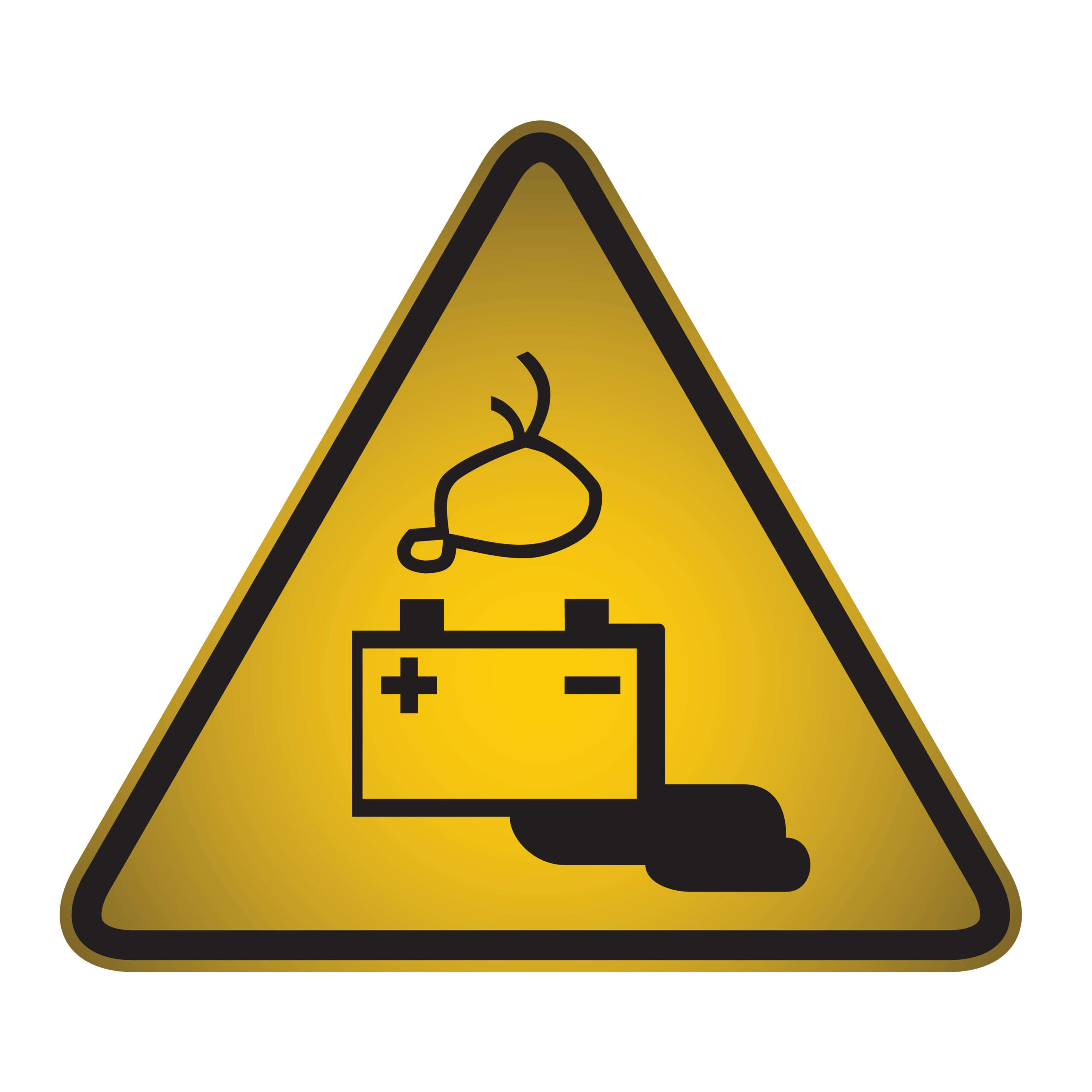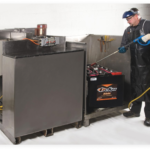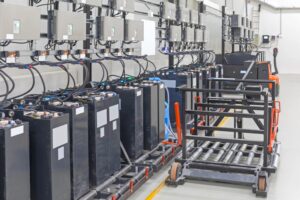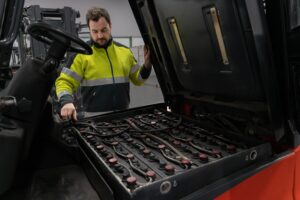Industrial forklifts are essential equipment in warehouses and distribution centers, used to move and stack heavy loads efficiently. These machines are powered by batteries that provide the necessary energy for their operation. Forklift batteries are different from car batteries in many ways, and understanding their characteristics is crucial for efficient and safe forklift operation.
In this blog, we will discuss industrial forklift batteries and their features, including types, maintenance, and safety measures.
Types of forklift batteries
Currently, there are two primary types of forklift batteries: lead-acid, and lithium-ion. But with advances in technology, additional types of power sources like hydrogen fuel cells are being used. Let’s discuss each of these types in detail:
Lead-acid batteries: These batteries are the most common type used in forklifts due to their low cost and availability. They are also reliable and have a long lifespan if adequately maintained. However, lead-acid batteries require regular watering and periodic equalization to prevent damage.
Lithium-ion batteries: These batteries are becoming increasingly popular due to their efficiency and maintenance-free operation. They are also lightweight, which means they can power heavier forklifts while reducing overall weight. Lithium-ion batteries also have a long lifespan and require less charging time than lead-acid batteries. However, they are more expensive than lead-acid batteries.
Hydrogen fuel cells: Fuel cells use hydrogen and oxygen to produce electricity. They are efficient, quiet, and produce zero emissions. However, they are expensive and require specialized equipment and maintenance. Fuel cells are promising future technology but are still an unrealistic solution for many businesses.
Maintenance of forklift batteries
To ensure the longevity and optimal performance of forklift batteries, they require regular maintenance. Here are some tips for maintaining forklift batteries:
Perform regular inspections: Perform routine visual inspections to identify any signs of damage, leaks, or corrosion. Check for loose connections and clean terminals to ensure optimal conductivity.
Check battery fluid levels regularly: Lead-acid batteries require regular watering to to prevent sulfation and optimize battery performance. Check fluid levels and refill with distilled water as needed.
Equalize batteries: Equalization is a process that helps extend the life of lead-acid batteries by balancing the charge between cells. It involves charging the battery at a higher voltage than usual to ensure each cell gets an equal charge.
Charge the battery fully: For best results, charge the battery fully after use. Avoid partial charging, as it can lead to sulfation, which can reduce battery life.
Store the battery properly: When not in use, store the battery in a dry, cool place away from direct sunlight and sources of heat.
Safety measures
Forklift batteries can be dangerous if not handled correctly. To keep your employees safe, there are several safety measures your company should follow.
Training and Education: Ensure all operators are trained in forklift battery handling, charging procedures, and emergency protocols. Familiarize them with the risks associated with improper handling and the use of personal protective equipment (PPE).
Ensure Proper Charging: Always follow the manufacturer’s instructions for charging the battery. When charging, keep the battery compartment open for ventilation and cooling. Be sure to turn off the charger before removing the batteries.
Handling and Storage: Follow safe handling practices while connecting or disconnecting batteries, using appropriate lifting equipment, and avoiding unnecessary strain. Store batteries in designated areas with proper containment measures and ensure they are secure to prevent accidental tipping. Keep all metal objects from touching the top of the batteries.
Emergency Preparedness: Establish clear emergency procedures, including spill containment, fire response, and evacuation plans. Install fire extinguishers and other safety equipment in battery charging areas.
Safety considerations cannot be overlooked when dealing with industrial forklift batteries. Safe handling practices, proper storage, and preparedness for emergencies, including spill containment and fire response, contribute to a safer working environment.






